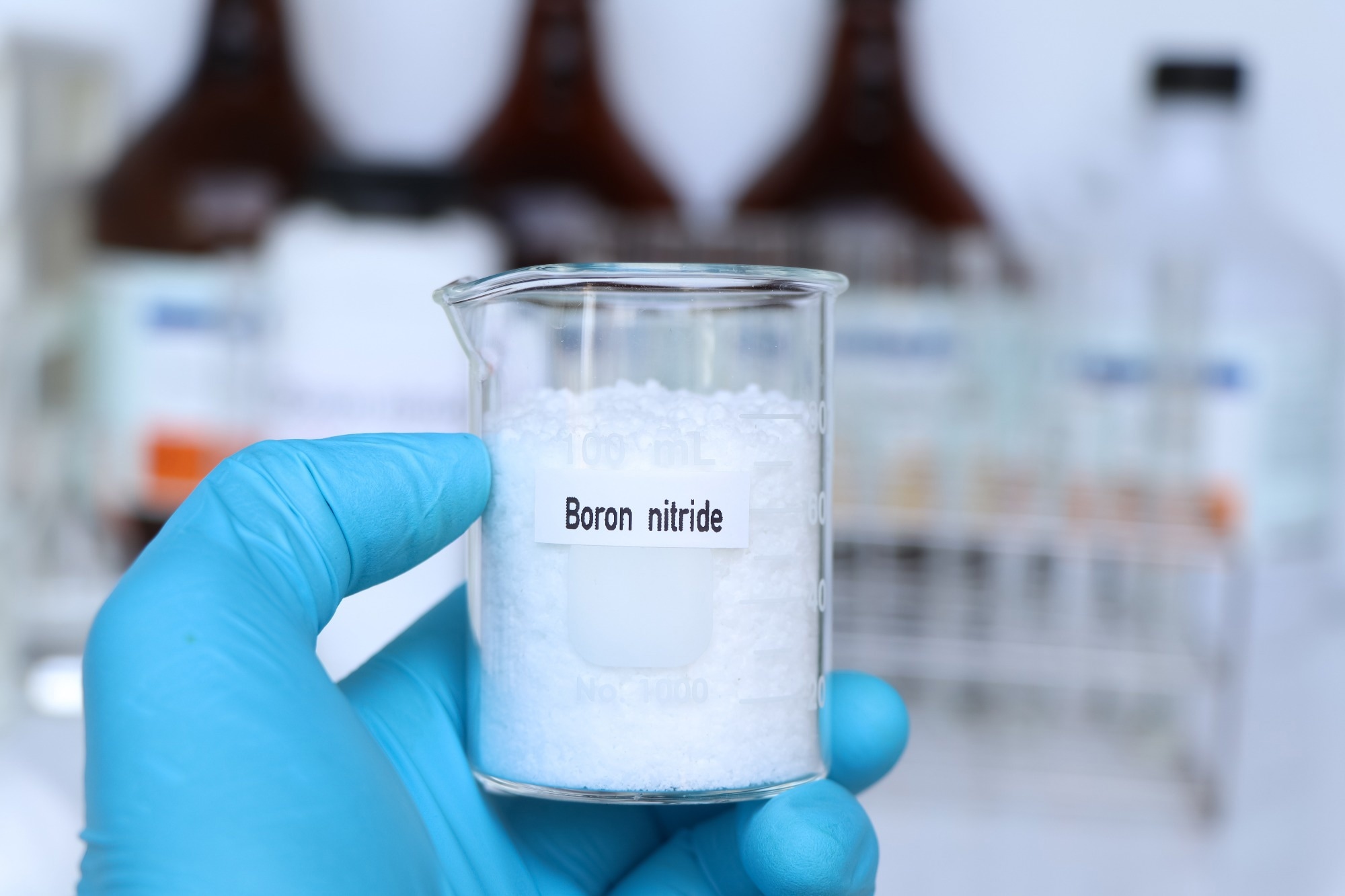A team of physicists at the University of Cambridge has made a major advance in quantum sensing, demonstrating that spin defects in hexagonal boron nitride (hBN) can function as highly sensitive, room-temperature sensors capable of detecting vectorial magnetic fields at the nanoscale.

Image Credit: chemical industry/Shutterstock.com
The findings, published in Nature Communications, bring quantum sensing closer to practical, real-world applications.
Quantum sensors allow us to detect nanoscale variations of various quantities. In the case of magnetometry, quantum sensors enable nanoscale visualization of properties like current flow and magnetisation in materials leading to the discovery of new physics and functionality. This work takes that capability to the next level using hBN, a material that’s not only compatible with nanoscale applications but also offers new degrees of freedom compared to state-of-the-art nanoscale quantum sensors.
Dr. Carmem Gilardoni, Study Co-First Author, Cavendish Laboratory, University of Cambridge
Until now, quantum magnetometry at the nanoscale under ambient conditions has relied primarily on nitrogen vacancy (NV) centres in diamond. While powerful, NV centres are inherently limited—they detect magnetic fields along a single axis and have a restricted dynamic range. The Cambridge team’s hBN-based sensors overcome these challenges, offering a multi-axis approach with a much broader dynamic range.
Their work not only demonstrates the sensor’s performance but also sheds light on the physical mechanisms behind its capabilities. The researchers found that hBN’s low symmetry and specific excited-state optical properties contribute to its sensitivity and vectorial sensing ability.
hBN is a two-dimensional material, similar to graphene, that can be thinned down to just a few atomic layers. Defects in its crystal structure absorb and emit visible light in ways that respond to nearby magnetic fields, making it a promising platform for quantum sensing.
In this study, the team used a method called optically detected magnetic resonance (ODMR) to measure how the fluorescence from these defects changed in response to magnetic fields. By analysing the spin dynamics and photon emission behaviour, they were able to connect the sensor’s optical characteristics to the symmetry of the defect—key to understanding its superior performance.
ODMR isn’t a new technique – but what we have shown is that probes built using the hBN platform would allow this technique to be applied in a variety of new situations. It’s exciting because it opens the door to imaging magnetic phenomena and nanomaterials in a way we couldn’t before.
Dr. Simone Eizagirre Barker, Study Co-First Author, Cavendish Laboratory, University of Cambridge
“This sensor could open the door to studying magnetic phenomena in new material systems, or with higher spatial resolution than done before. The 2D nature of the host material also opens exciting new possibilities for using this sensor. For example, the spatial resolution for this technique is determined by the distance between the sample and sensor. With an atomically-thin material, we can potentially realize atomic scale spatial mapping of magnetic field,” added Prof Hannah Stern, who co-led the research with Prof Mete Atatüre at the Cavendish Laboratory.
Journal Reference:
Gilardoni, M., C., et al. (2025) A single spin in hexagonal boron nitride for vectorial quantum magnetometry. Nature Communications. doi.org/10.1038/s41467-025-59642-0